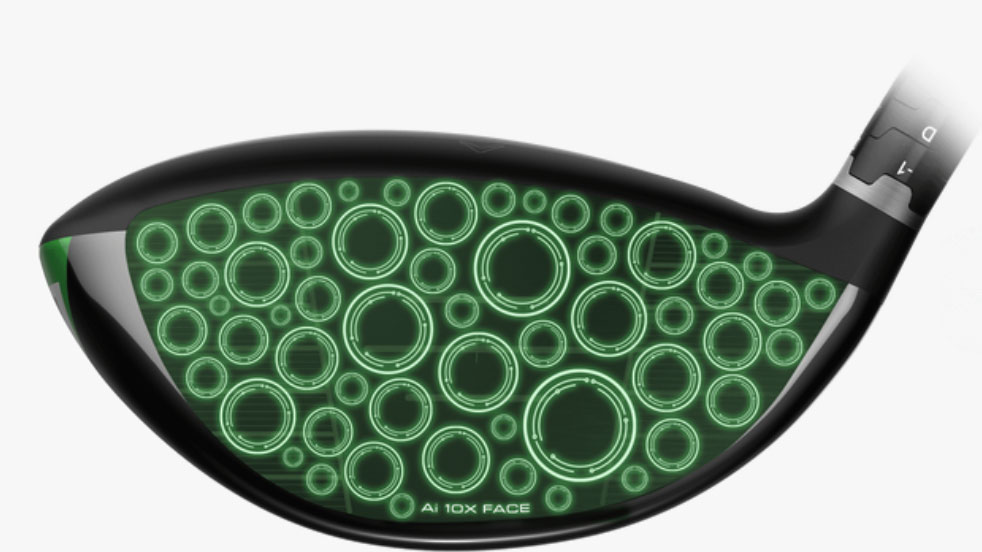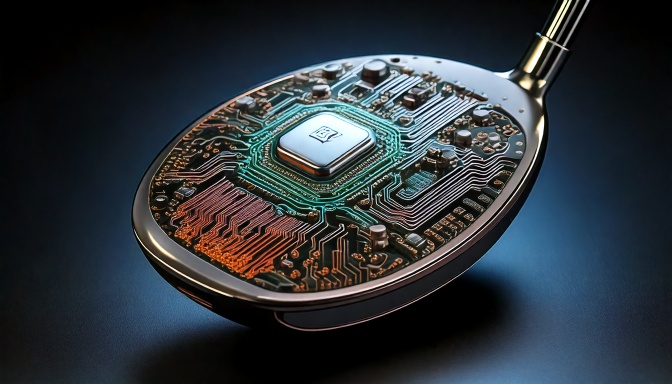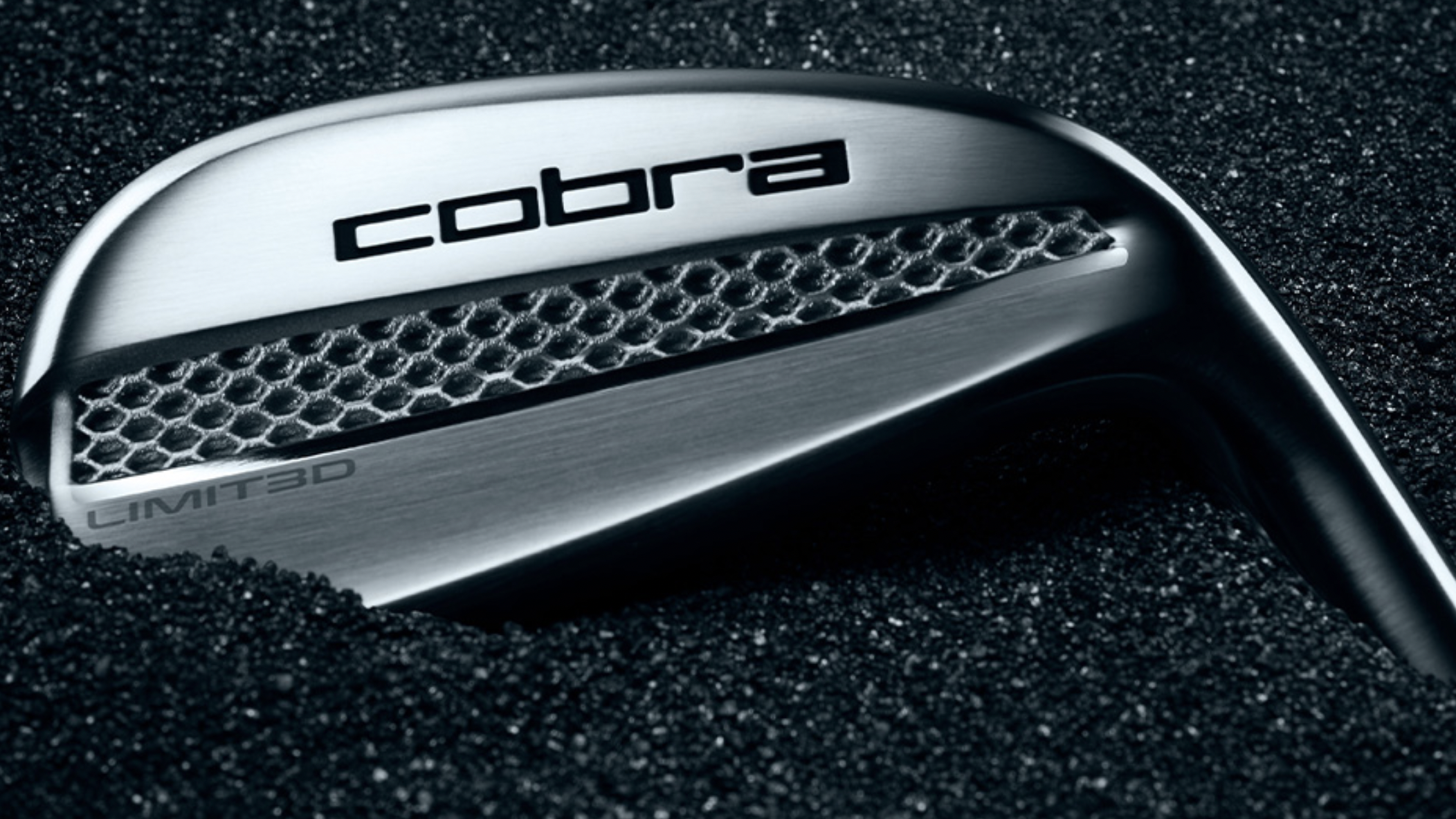"The Implications Are Almost Unthinkable" - How A.I. Could Supercharge Golf Club Performance Sooner Than You Think
Joe Ferguson has been analysing the impact of A.I. in golf equipment to date and considering what seemingly far fetched applications could be around the corner


There is no getting away from it, the age of Artificial Intelligence is infiltrating every aspect of our lives, and now even the golf course isn’t safe. While A.I.-powered swing analysis and virtual coaching have gained significant traction in recent months with tools such as Wilson’s custom fitting tool Golf Fit AI, and coaching apps like Skillest and Sportsbox AI (all of which I have personally experienced), for me, the next sector targeted by super computers could be the tools of the game: the golf clubs themselves. The prospect of A.I.-powered golf clubs isn't just about hitting the ball further; it's about a personalized, adaptive experience that could completely revolutionize how we play.

The Ai 10X face of the Callaway Elyte driver
Don’t get me wrong, I am not claiming to be a prophet here, as we are already seeing the use of A.I. on products such as Callaway drivers with their AI face designs, but this could just be scratching the surface. Imagine one of the best drivers having the ability to dynamically adjust its loft and face angle mid-swing, correcting for your individual flaws in real-time. This isn't science fiction; it could genuinely be the direction in which golf equipment is heading. Sensors embedded within the clubhead, coupled with A.I. algorithms, could analyze swing data such as clubhead speed, angle of attack, dynamic loft, and face angle, and make instantaneous adjustments using micro-actuators in time for impact.
Now, of course, this would massively contravene the current rules of golf (this is merely a tongue-in-cheek glance at what may be possible), but who knows where this ever-evolving game may take us!

Could sensors within a club soon be making adjustments mid-swing?
The potential benefits are very thought-provoking. For high handicappers, A.I.-powered clubs could offer unprecedented forgiveness, mitigating the effects of inconsistent swings, increasing enjoyment of the game, and as such participation and retention. For skilled golfers, it could unlock new levels of precision, automatically optimizing launch conditions for specific shot shapes and distances.
One of the most exciting and interesting areas of development I have heard spoken about is that of dynamic weighting. Traditional golf clubs rely on static weights to influence ball flight by altering CG and creating flight bias, however, there is potentially a world in which A.I.-powered golf clubs could use active and dynamic weighting systems, with the ability to adjust the center of gravity mid-swing to correct for slices or hooks. The implications of technology such as this are almost unthinkable! Dramatically improved accuracy and consistency, transforming even the most erratic swings into repeatable, reliable motion.

Cobra has been 3D printing golf clubs for some time now.
Furthermore, some people (significantly cleverer and more imaginative than myself) believe that A.I. could even have the capability to continually personalize and re-personalize a club’s response to individual swing characteristics over time. By analyzing data parameters from previous swings, a club could potentially learn and adapt its specifications, creating a tailored experience unique to each golfer that can continue to refine itself over time.
For example, if A.I. were detecting a consistent right miss with the driver, it could potentially automatically adjust its CG location, lie angle, and shaft torque to counteract the precise amount the club face is open at impact. Furthermore, sensors embedded within a shaft could potentially self-learn the specific areas of the shaft on which pressure and torque are applied, and work in tandem with the clubhead to dynamically optimize the ideal flex and torque profile for its player at any given time. This level of customization quite obviously goes far beyond traditional club fitting, offering an ongoing optimization process that actually evolves with a golfer's game.
Subscribe to the Golf Monthly newsletter to stay up to date with all the latest tour news, equipment news, reviews, head-to-heads and buyer’s guides from our team of experienced experts.

Could this be what golf club manufacturing facilities look like in the future?
The possible implications for the best putters are equally dramatic. A.I.-powered putters could analyze green reading data, factoring in slope, speed, and even grain, to provide real-time feedback on optimal lines and speeds. Micro-adjustments to the putter face could even compensate for subtle inconsistencies in the stroke, and even grass length, ensuring a truer roll and more made putts.
Some purists will vehemently argue that A.I.-powered clubs completely diminish the skill and artistry of the game. However, proponents may argue back that these clubs could level the playing field, making golf more accessible and enjoyable for a wider audience. With many people citing the difficulty of the game as one of the main barriers to entry, and certainly a reason for many people drifting out of the game, it is at least food for thought at a recreational level.
Despite the ethical challenges and the inevitable minefield of regulations with the governing bodies of the game, the potential of A.I.-powered golf clubs is undeniable. As technology continues to advance, we can expect to see an ever-growing relationship with A.I. and golf equipment.
As a self-confessed gear nerd, I am absolutely fascinated by what could be to come from A.I. in the golf equipment space, and while I am very much a traditionalist, appreciative of craftsmanship and established methods of club building, I cannot help but be intrigued to see what is possible here. One thing is for sure however, I do not envy the governing bodies of the USGA and R&A in their task of trying to stay ahead of and regulate this seemingly inevitable tidal wave of technological advancements.

Joe has worked in the golf industry for nearly 20 years in a variety of roles. After a successful amateur career being involved in England squads at every age group, Joe completed his PGA degree qualification in 2014 as one of the top ten graduates in his training year and subsequently went on to become Head PGA Professional at Ryder Cup venue The Celtic Manor Resort. Equipment has always been a huge passion of Joe’s, and during his time at Celtic Manor, he headed up the National Fitting Centres for both Titleist and Taylormade. He’s excited to bring his knowledge of hardware to Golf Monthly in the form of equipment reviews and buying advice.
Joe lives in North Devon and still plays sporadically on the PGA West region circuit. His best round in recent years came earlier in 2023 where he managed a 9 under par 63 at Trevose GC in a Devon & Cornwall PGA Tournament.
Joe's current What's In The Bag?
Driver: Switch between TaylorMade Qi35 and Callaway Elyte TD - both with Fujikura Ventus Black 6-X
Fairway wood 1: TaylorMade BRNR Copper Mini Driver - Fujikura Ventus Black 7-X
Fairway wood 2: Callaway Apex UW 17˚- Fujikura Ventus Black 9-X
Irons: TaylorMade P7CB 3-PW with Dynamic Gold Tour Issue X100 shafts
Wedges: Callaway Opus 50, 54, and 60 degrees - Project X LS 6.0 shafts
Putter: LAB Golf Oz.1 (zero shaft lean)
Ball: TaylorMade 2024 TP5x
Grips: Golf Pride Tour Velvet 60R
Bag: Vessel Player IV Pro DXR Stand
You must confirm your public display name before commenting
Please logout and then login again, you will then be prompted to enter your display name.